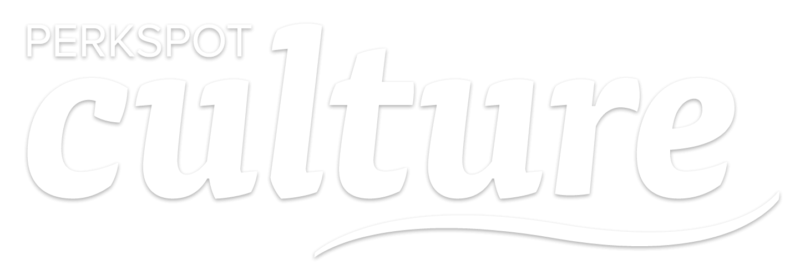Contributing Author
August 31, 2022

The workplace is changing. If you are running a business, you probably know this too well. Today, many organizations are doing away with the traditional office – in favor of a remote environment. In recent years this trend has accelerated, 52% of global employees now work remotely at least once a week. It’s not hard to see why. Remote workers don’t have to worry about costs of commuting or delays due to travel disruptions. Businesses can save money by renting small office spaces, meaning they can focus funds on growth. With the right technology and an application of integrations, a remote worker can be just as effective as an in-office counterpart; as long as you pay attention to their morale.
But despite these benefits, remote work isn’t always a walk in the park. Remote workers can feel isolated socially, and if you’re not careful, people can feel out of the loop. It all negatively impacts the morale of employees. But it doesn’t have to be this way. Here are some simple ways to boost the morale of your remote employees.
Check in On Your Team
It’s easy for workers to feel a disconnect remotely. In a traditional office environment, leaders will get many opportunities to spend time with team members. Employees must trust leaders and vice versa. Regular meetings provide useful opportunities for teams to get to know leaders.
But in the remote environment, ensuring contact is harder. If leaders don’t work hard to ensure communication, there will be a lack of coherence within teams. But what can be done to avoid this problem?
Ensuring regular meetings is a good first step. Try to find a time that fits with the schedule of all members to avoid creating frustration. Ultimately, you want communication to be as natural as possible. That’s why it’s a good idea to prioritize video calling over audio calls, as this offers more common face-to-face communication.
It’s best to choose work from home tools that have a track record of reliability, especially for communication purposes. You can’t ensure solid dialogue if your phone keeps dropping calls.
Make Mental Health a Priority
 The topic of mental health in the workplace has been given more and more attention in recent years. Today, people are less reluctant to talk about their problems and more willing to seek help. But despite this, studies have shown that nearly 1 in 4 workers meet the criteria for ‘clinically relevant symptoms’ of anxiety and depression.
The topic of mental health in the workplace has been given more and more attention in recent years. Today, people are less reluctant to talk about their problems and more willing to seek help. But despite this, studies have shown that nearly 1 in 4 workers meet the criteria for ‘clinically relevant symptoms’ of anxiety and depression.
In the remote work environment, these problems are only exacerbated. What’s more, people are more reluctant to come forward to talk about their problems. So, what’s the solution? Start by leveraging emotional intelligence.
Alongside group calls, it’s useful to hold regular one-to-one sessions with members. By doing so, you can offer the chance for workers to express their issues in a confidential, judgment-free environment.
To provide better support in sessions, it’s a good idea to take note of what employees are saying. Otter AI is a good option if you’d rather transcribe notes (although there are some Otter AI app alternatives if you’re looking to save money).
So, if you haven’t already, get in touch with workers and organize some drop-in sessions.
Take Regular Breaks
 A key element of working in a standard work environment is a daily schedule. Loss of routine is one of the reasons that many remote workers struggle. Many remote employees overlook a fundamental element of working: taking a break.
A key element of working in a standard work environment is a daily schedule. Loss of routine is one of the reasons that many remote workers struggle. Many remote employees overlook a fundamental element of working: taking a break.
The idea of employees doing more work might seem appealing to some (cold-hearted) team leaders, but breaks are necessary. Without taking the occasional rest, workers risk being burnt out. Ensure you encourage your team to step away from the screen and take time for themselves.
Additionally, why not set up a virtual break-out room that employees can join on their breaks? Regular chats are a great way for workers to bond and feel part of a team. By encouraging breaks, your workers will feel more rested; you’ll notice a boost in motivation. It’s a win-win!
Have a Virtual Night Out
Not everyone likes the idea of spending a night out at work. But there is no denying the importance of social events in terms of teamwork and morale. Sharing drinks with your team can be a great way of recognizing successes and building stronger bonds. But how do you replicate this experience when your team is remote?
There’s no denying that virtual festivities are harder to orchestrate. There’s a good chance that you have workers spread across the globe. This means you will have to work across time zones to find a time that works for everyone. Obviously, standard activities like going for a meal aren’t possible, so you have to think creatively.
But if you keep these factors in mind, you can have a fun virtual night out. Here are a few fun activities that you can try out:

Share Drinks – This is probably the simplest solution. While you can’t go to a bar, you can all gather in a conference call and share a drink together.
Cook Together – Again, you can’t go out for a meal, so why not share one together? You can even all work on the same recipe and then share the results of your work!
Start a Book Club – Not everyone likes reading. But for those that do, a book club can be a great way to bond over a shared interest. If reading isn’t an interest, why not all agree on a movie to watch together?
Adapting Is Key
The switch to remote work can be a learning curve. Don’t worry if it takes time to adjust to this different environment. You will need to be flexible with time zones and even schedules.
To keep morale high, you need to put communication at the heart of everything you do. By adapting to new technologies and putting workers’ needs first, you’ll have a happy and productive workforce. With the right approach, your business can out-compete your rivals. So make sure you’re getting the most out of remote working!
This guest post was authored by Grace Lau.
Grace Lau is the Director of Growth Content at Dialpad, an AI-powered cloud mutlichannel call center platform for better and easier team collaboration. She has over 10 years of experience in content writing and strategy. Currently, she is responsible for leading branded and editorial content strategies, partnering with SEO and Ops teams to build and nurture content. Grace Lau also published articles for domains such as Tapfiliate and Easy Affiliate.

















